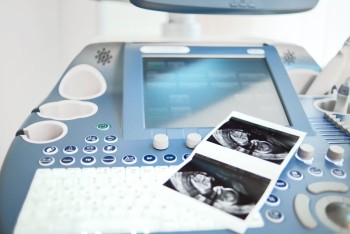
The significance of Pelvic Imaging transcends routine diagnostics, playing a pivotal role in deciphering complex medical scenarios with unparalleled precision.
Ultrasound / USG Pelvis Scan in India with Cost
Ultrasound or USG Pelvis
Scan in Detail
Introduction
Embark on a journey into the intricate world of Pelvic Imaging, where precision meets exploration. Among the many tools at the disposal of medical professionals, the Ultrasound or USG Pelvis Scan stands out for its ability to uncover the hidden mysteries of the human body.
Importance
The significance of Pelvic Imaging transcends routine diagnostics, playing a pivotal role in deciphering complex medical scenarios with unparalleled precision. Its application is especially crucial in the realms of gynecology and urology, offering profound insights into reproductive health.
Preparation
Preparing for a Pelvic Ultrasound is akin to orchestrating a symphony of readiness. Patients may find themselves in the spotlight, needing to ensure a full bladder for optimal imaging clarity. Understanding the pre-scan instructions becomes essential, setting the stage for a performance that reveals intricate details.
Procedure
Picture a ballet of sound waves choreographed with finesse. The Pelvic Ultrasound procedure unfolds as patients recline on an examination table, surrounded by an atmosphere of anticipation. A gel, akin to a prima ballerina's tutu, is delicately applied to the pelvic canvas, paving the way for the main act—the handheld transducer.
Imaging Areas
The focus of this cinematic exploration is set on the uterus and ovaries in women. The Pelvic Ultrasound acts as a director, capturing detailed images that unfold the narrative of size, shape, and structural nuances within these vital organs.
Benefits
Beyond the surface-level diagnostic benefits, Pelvic Ultrasound brings unseen advantages to the forefront. Its versatility extends beyond reproductive health, making it a versatile and invaluable tool in the medical arsenal.
Risks
As the spotlight shines on health, understanding potential risks becomes paramount. Fortunately, the Pelvic Ultrasound takes center stage as a safe procedure, devoid of known risks or side effects—eliminating the shadow of health concerns.
Applications
Pelvic Imaging transcends its primary role in reproductive health evaluations. Its lens broadens, encompassing the assessment urinary and digestive issues, offering a comprehensive view of the pelvic region's intricate landscape.
Comparisons
Balancing choices in the diagnostic realm involves a comparison of Pelvic Ultrasound with other imaging techniques. This section delves into the unique benefits and limitations, aiding readers in navigating their healthcare decisions.
Expert Opinions
The medical arena echoes with voices emphasizing the significance of Pelvic Ultrasound. Insights from professionals enrich our understanding, highlighting its pivotal role in accurate diagnostics and patient care.
Technological Advancements
Immerse yourself in the technological tapestry woven within Pelvic Imaging. Innovations like 3D and 4D imaging paint a vivid picture, enhancing the precision and depth of information obtained through ultrasound.
Patient Experience
The patient's odyssey through a Pelvic Ultrasound is a pivotal chapter. Understanding what to anticipate during and after the scan alleviates concerns, transforming the experience into a collaborative venture between patient and practitioner.
Conclusion
As the tapestry of Pelvic Imaging unravels, the significance and utility of Ultrasound or USG Pelvis Scan become undeniable. This article aimed to weave together the threads of knowledge, offering both informative content and expert perspectives.
Frequently Asked Questions (FAQs) about USG Pelvis
1. How long does a Pelvic Ultrasound take on average?
A Pelvic Ultrasound typically takes around 30 minutes to complete, but the duration may vary based on factors like the patient's anatomy and the complexity of the examination.
2. Is radiation involved in Pelvic Ultrasound?
No, Pelvic Ultrasound does not use radiation. It relies on harmless sound waves to create detailed images, making it a safe and radiation-free imaging technique.
3. Can I eat before the scan?
Yes, there are generally no restrictions on food intake before a Pelvic Ultrasound. Unlike some other medical imaging procedures, a Pelvic Ultrasound does not require fasting.
4. Are there any risks associated with the procedure?
Pelvic Ultrasound is considered safe, with no known risks or side effects. It is a non-invasive and painless procedure, making it a preferred choice for various diagnostic purposes.
5. Is the procedure painful?
No, Pelvic Ultrasound is a painless and non-invasive procedure. The transducer used during the scan is applied externally to the pelvic area, eliminating any discomfort or pain for the patient.
6. Can a Pelvic Ultrasound detect all types of gynecological issues?
While Pelvic Ultrasound is a powerful diagnostic tool for many gynecological issues, it may not detect all types of conditions. Some conditions, such as certain types of ovarian tumors, may require additional imaging or diagnostic procedures for accurate diagnosis.
7. How often should women undergo routine Pelvic Ultrasound screenings?
The frequency of routine Pelvic Ultrasound screenings varies based on individual health factors and medical history. Generally, healthcare providers may recommend periodic screenings for women, especially those with a history of gynecological issues or as part of routine preventive care.
8. Can a Pelvic Ultrasound be performed during pregnancy?
Yes, Pelvic Ultrasound is commonly used during pregnancy to monitor the health and development of the fetus. It is a safe and valuable tool for assessing the uterus, placenta, and overall fetal well-being.
9. What is the difference between a transvaginal and transabdominal Pelvic Ultrasound?
A transvaginal Pelvic Ultrasound involves placing a small transducer into the vagina for a more detailed view of the reproductive organs. In contrast, a transabdominal Pelvic Ultrasound is conducted externally, with the transducer applied on the abdominal surface. The choice between the two depends on the specific diagnostic requirements and the patient's comfort.
10. Are there any age restrictions for undergoing a Pelvic Ultrasound?
There are no specific age restrictions for Pelvic Ultrasound. It can be performed at any age, depending on the medical necessity and the healthcare provider's recommendations. Pelvic Ultrasound is utilized for various purposes, from assessing reproductive health in younger individuals to detecting and monitoring conditions in older adults.
Conclusion
As we conclude this exploration into the realm of Ultrasound or USG Pelvis Scan, the expanded FAQs aim to provide a more thorough understanding of common questions and concerns associated with this crucial diagnostic tool.
(0)
Login to continue



